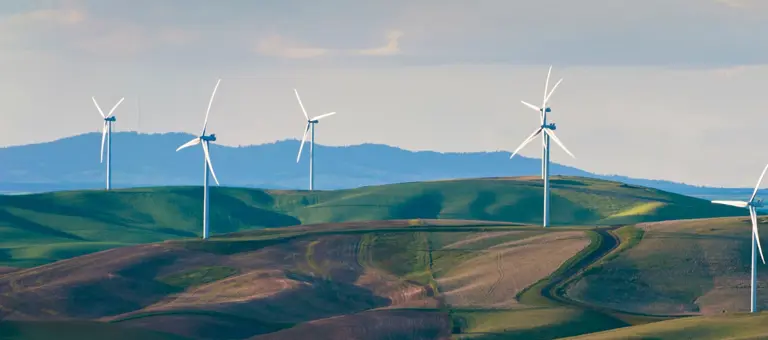
North American Power Markets Insight Hub: discover what’s driving opportunities for energy investors
8 December 2022
As North America advances its energy transition, the region’s power markets should become a key area of focus for energy market investors. The region has taken on even greater significance as a result of landmark policies such as the Inflation Reduction Act (IRA) in the US which commits significant capital to accelerate the pace of the energy transition and underpins the certainty of renewable projects.
Baringa’s energy advisory team support investors and developers to navigate this crucial market. We provide the insight and analysis needed to support critical investment decisions through our power market reports and broader advisory work in this space. Drawing on our power market projections, we’ve produced a series of videos that provide a deep-dive into each regional power market. Each one identifies key areas for investors to watch.
To learn more about our power market projections, transaction due diligence, and commercial advisory services please contact Tom Harper.
ERCOT – green shoots in a market under stress
Nina Fahy explores the persistent challenges facing the ERCOT market, as well as identifying key areas of future growth, with particular attention to how:
- ERCOT is still dealing with the repercussions of Storm Uri, including new management, multi-billion-dollar settlements and operational and policy changes
- Positive economics (resource, land and ease of consenting) rather than state support continue to drive high penetration of onshore wind and solar
- The market is well-positioned for a leading role in blue and green hydrogen clusters, attracting significant interest from oil & gas investors and industrial users
PJM – powerful tailwinds propel clean technologies, with grid access the key to success
John Baron explains the factors that make PJM the largest and most liquidly-traded market in the US, identifying:
- The changing mix of clean tech and traditional power
- The policy initiatives that will add more than 70GW of clean energy capacity – with investment set to reach $380 billion by 2050
- Why building sufficient transmission to accommodate new generation remains the biggest obstacle
NYISO – leading the way on climate-change initiatives
In this video, Kurt Coutain examines how New York’s clean energy and climate agendas are forcing the pace of change, identifying:
- How the commitments and targets required by the Climate Leadership and Community Protection Act (CLCPA) and the IRA are accelerating offshore wind and solar
- The strong case for utility-scale battery storage to ensure sufficient flexibility
ISO - NE – reliance on gas, but a major drive for renewables
Tom Harper explains how New England is setting some of the nation’s boldest decarbonization targets, including the implications of:
- The IRA and state policy initiatives that are creating an aggressive push for renewables
- Increased incentives for new storage and transmission
- Increasing supply chain costs on the feasibility of new projects, including offshore wind
SPP – as coal retires, wind and solar rush in
In this video, Jeremy Barrand describes the opportunities and challenges of explosive growth in renewables in the SPP, highlighting:
- How the variability of wind assets creates uncertainty and price volatility
- Anticipated increases in storage capacity investment incentivized by the IRA
- The growing role of solar generation in the energy mix
MISO – navigating a dual-market, two-speed approach to decarbonization
Jeremy Barrand explains why the largest geographical market in the US can seem to operate as two, with MISO South’s thermal resources contrasting with expanding renewables elsewhere. He explores:
- The imbalance between coal retirement and renewable replacement and the implications for future auction processes
- Barriers to decarbonization including rising interconnections costs and capacity shortages
AESO – balancing plentiful assets in the ground with climate policy demands
Jack Morrow looks at how a market with considerable oil and gas production will take a gradual approach to decarbonization, exploring the impacts of:
- The most aggressive carbon tax in the western hemisphere, set to hit $180 per metric ton by 2030
- The persistently high proportion of fossil fuels in electricity generation
- Opportunities for renewables and storage in the market
Related Insights

AI revolution in energy and commodity trading
On June 25th, Baringa, Salesforce, and Terranoha welcomed industry leaders from commodity trading, and technology in Geneva for an insightful conversation on how AI is transforming the trading world.
Read more
Preparing for the EU's regulation on deforestation-free products
Is your supply chains prepared for the incoming EU Deforestation Regulation? In this article we share what you need to know in preparation for the new regulation, and how Baringa can help you.
Read more
Commodities and energy trading video series
Join us as we delve into key areas that are shaping the trading industry
Read more
Digital transformation and decarbonisation in the energy sector
Energy leaders are using digital technologies and data to fast-track their journeys to decarbonisation.
Read moreIs digital and AI delivering what your business needs?
Digital and AI can solve your toughest challenges and elevate your business performance. But success isn’t always straightforward. Where can you unlock opportunity? And what does it take to set the foundation for lasting success?